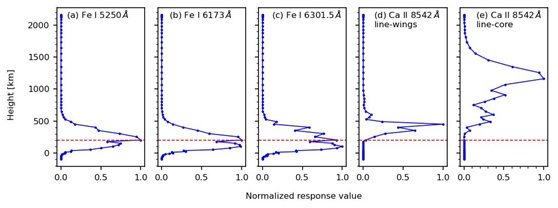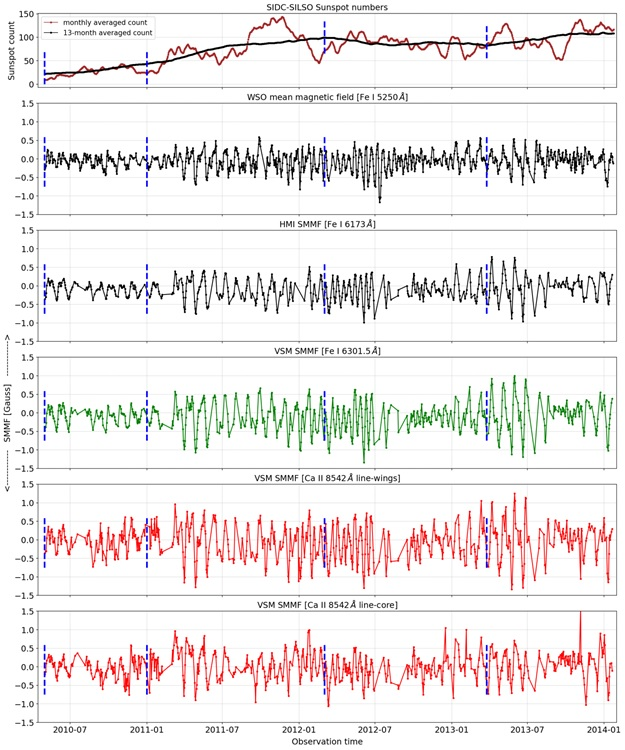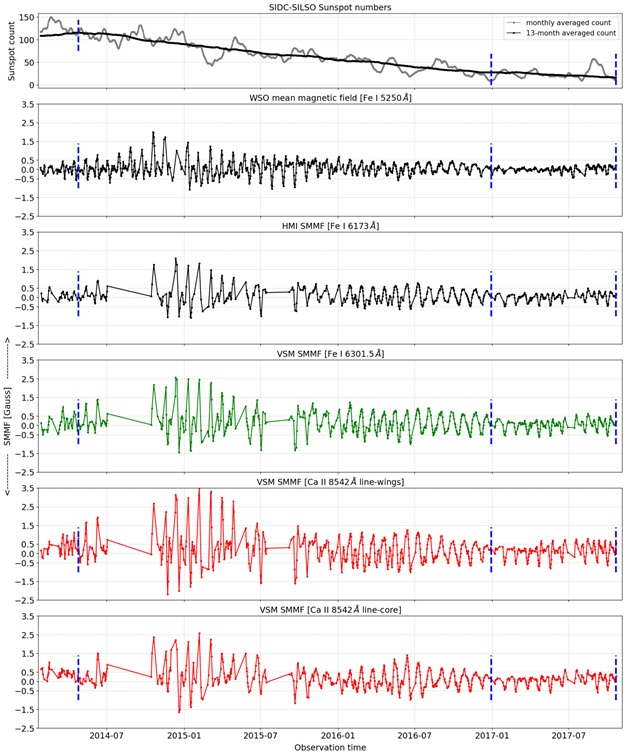We may now have a clearer picture of how the Sun’s magnetic field influences the interplanetary magnetic space, the primary driver of space weather.
Scientists are one step closer to identifying the source of the Solar Mean Magnetic Field (SMMF), which is the mean value of the line-of-sight (LOS) component of the solar vector magnetic field averaged over the visible hemisphere as well as its relationship with Interplanetary Magnetic Field (IMF).
The Sun contains the corona (the outer shell of the Sun's atmosphere), the photosphere (the visible surface), and the chromosphere (near-transparent layer, just above the photosphere) with magnetic field generated by electrical currents acting as a magnetic dynamo inside the Sun. These electrical currents are generated by the flow of hot, ionized gases in the Sun's convection zone.
The Solar Mean Magnetic Field (SMMF) is the mean value of the line-of-sight (LOS) component of the solar vector magnetic field averaged over the visible hemisphere of the Sun. The effect of SMMF on IMF is an object of interest to scientists, for a better understanding of the IMF paves the way for responding to space weather in a better fashion. However, so far, the studies on SMMF have mostly been confined to the magnetic field measurements at the photosphere.
Scientists from the Indian Institute of Astrophysics (IIA), an autonomous institute of the Department of Science and Technology, in their quest to understand if and how the SMMF at chromospheric heights is related to the SMMF at photospheric heights, have found a very good similarity between the two, with the value of chromospheric SMMF being lower than the photospheric SMMF, thereby suggesting that the primordial magnetic field inside the Sun could be a source of the SMMF.
They calculated and analysed the SMMF using magnetic field measurements at the chromosphere, in conjunction with that of photospheric measurements. For this, they utilized data from Synoptic Optical Long-term Investigations of the Sun (SOLIS)/Vector Spectromagnetograph (VSM) instrument during 2010 – 2017 and cross-checked this with data from the Wilcox Solar Observatory (WSO).

Figure 1: The response of the Stokes V profile to the perturbations in the LOS magnetic field, averaged over different magnetic fields, are presented with respect to height for the spectral lines (a) WSO Fe I 5250 Å [5250.216 Å ± 100 mÅ], (b) HMI Fe I 6173 Å [6173 Å ± 250 mÅ], (c) VSM Fe I 6301.5 Å [6301.515 Å ± 0.5 Å], (d) VSM Ca II 8542 Å line-wings [8540.1 Å- 8541.5 Å, 8542.7 Å- 8544.1 Å], (e) VSM Ca II 8542 Å line-core [8542.1 Å ± 600 mÅ]. The functions are calculated at multiple points in the instrument’s wavelength range, and at the magnetic field values [50, 200, 500, 1000, 2000, 3000] gauss, and averaged. The red dotted line shows the peak of the response function for the WSO Fe I 5250 Å line.

Figure 2: The sunspot numbers (monthly averaged and 13-months averaged), daily Bwso, Bhmi, and VSM SMMF plots from 2010/05/01 to 2014/01/24. Bp, Bc, and Bw are plotted according to the average observation time between them. Each datapoint is shown by a dot, whereas lines connect adjacent datapoints. Data gaps can be understood by the absence of dots in the line. The vertical blue lines demarcate different stages of the solar cycle

Figure 3: The sunspot numbers (monthly averaged and 13-months averaged), daily Bwso, Bhmi, and VSM SMMF plots from 2014/01/25 to 2017/10/21. Bp, Bc, and Bw are plotted according to the average observation time between them. Each datapoint is shown by a dot, whereas lines connect adjacent datapoints. Data gaps can be understood by the absence of dots in the line. The vertical blue lines demarcate different stages of the solar cycle
They found that the SMMF at the chromosphere is very similar to the SMMF at the upper-photosphere and weaker compared to the latter by a factor of 0.60. This reduction in intensity could mean that a significant part of the SMMF is a magnetic field that propagates outwards from the photosphere to the chromosphere. Hence in addition to the magnetic fields from local solar activities, ( which will have more or less the same effect in the photosphere as well as the chromosphere), the SMMF must have another source, which reduces in strength the higher we go up in the Sun’s atmosphere. This points to the primordial magnetic field inside the Sun to be one source of the SMMF.”
The similarity between the photospheric and chromospheric SMMFs, and the reduced intensity of the chromospheric SMMF with respect to the photospheric SMMF corroborate the idea that the SMMF could be passing through the photosphere, chromosphere, and arriving at interplanetary space, where we measure it as the IMF. Thus they established that the SMMF and the IMF are related.
Understanding the source of the SMMF and its driving parameters could help us understand how the SMMF affects the IMF.
This study was carried out at the Indian Institute of Astrophysics (Bengaluru), an autonomous institute of the Department of Science & Technology (DST), Govt. of India, by Vishnu Madhu (PhD student), Harsh Mathur (PhD student) and Dr. K. Nagaraju (faculty).
Publication link: https://link.springer.com/article/10.1007/s12036-023-09944-w
For more information, please get in touch with Vishnu Madhu, at vishnu[dot]madhu[at]iiap[dot]res[dot]in






























